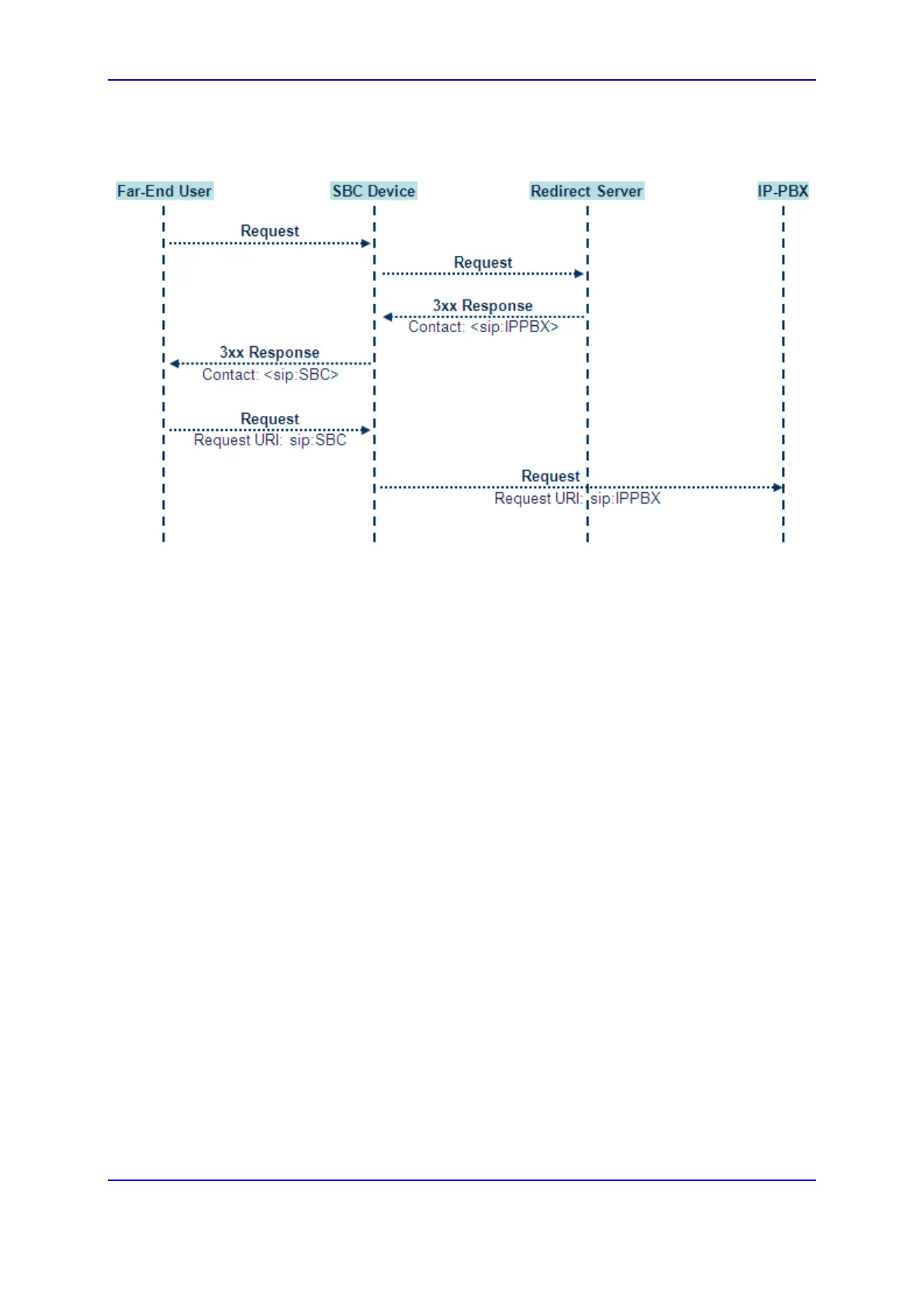Version 7.0 571 Mediant 3000
User's Manual 28. SBC Overview
5. The prefix is removed before the resultant INVITE is sent to the destination.
Figure 28-6: SIP 3xx Response Handling
The process of this feature is described using an example:
1. The device receives the Redirect server's SIP 3xx response (e.g., Contact:
<sip:User@IPPBX:5060;transport=tcp;param=a>;q=0.5).
2. The device replaces the Contact header value with the special prefix and database
key value as user part, and with the device's URL as host part (e.g., Contact:
<sip:Prefix_Key_User@SBC:5070;transport=udp>;q=0.5).
3. The device sends this manipulated SIP 3xx response to the Far-End User (FEU).
4. The FEU sends a new request with the Request-URI set to the value of the received
3xx response's Contact header (e.g., RequestURI:
sip:Prefix_Key_User@SBC:5070;transport=udp).
5. Upon receipt of the new request from the FEU, the device replaces the Request-URI
with the new destination address (e.g., RequestURI:
sip:Prefix_User@IPPBX:5070;transport=tcp;param=a).
6. The device removes the user prefix from the Request-URI, and then sends this
Request-URI to the new destination (e.g., RequestURI:
sip:User@IPPBX:5070;transport=tcp;param=a).
28.9.1.2 Local Handling of SIP 3xx
The device can handle SIP 3xx responses on behalf of the dialog-initiating UA and retry the
request (e.g., INVITE) using one or more alternative URIs included in the 3xx response.
The new request includes SIP headers from the initial request such as Diversion, History-
Info, P-Asserted-Id, and Priority. The source and destination URIs can be manipulated
using the regular manipulation mechanism.
The device sends the new request to the alternative destination according to the IP-to-IP
Routing table rules. (where the 'Call Trigger' field is set to 3xx). It is also possible to specify
the IP Group that sent the 3xx request as matching criteria for the re-routing rule in this
table ('ReRoute IP Group ID' field).
